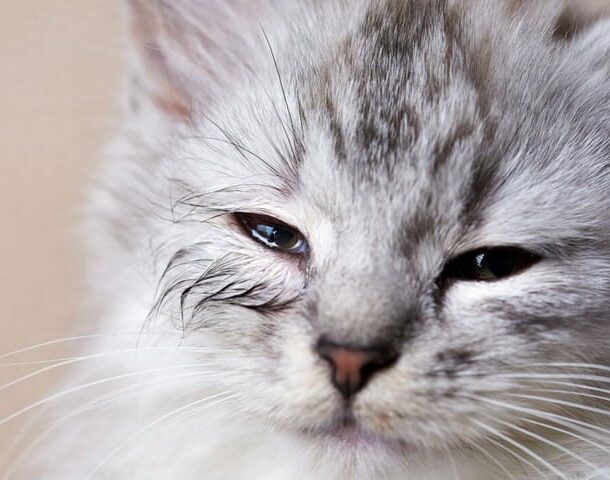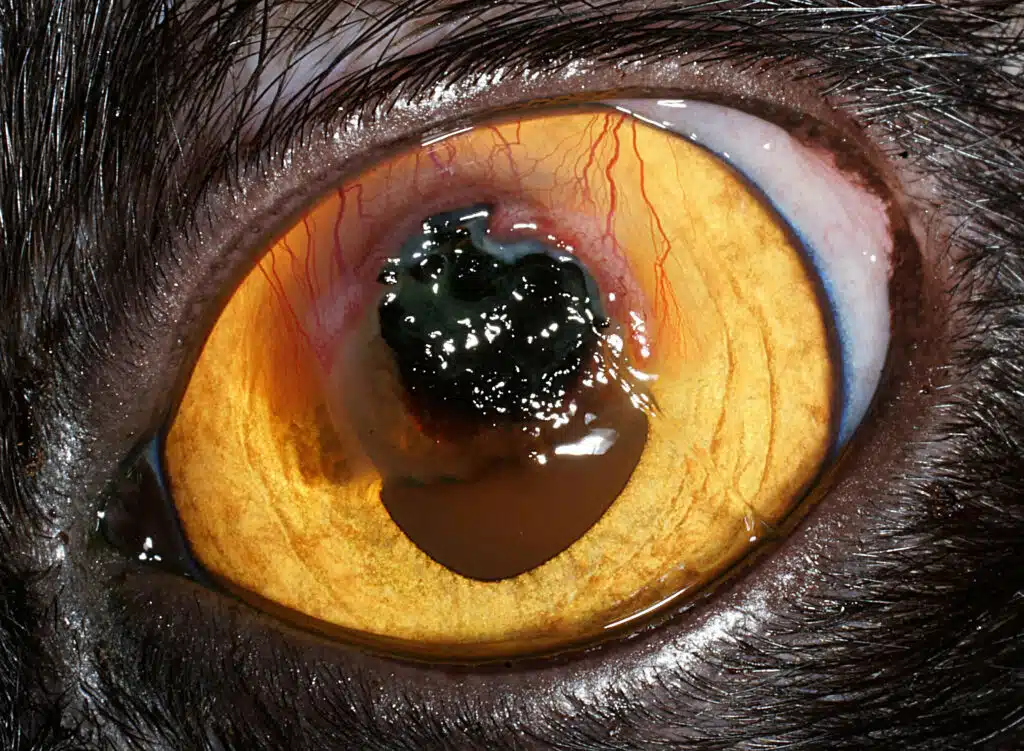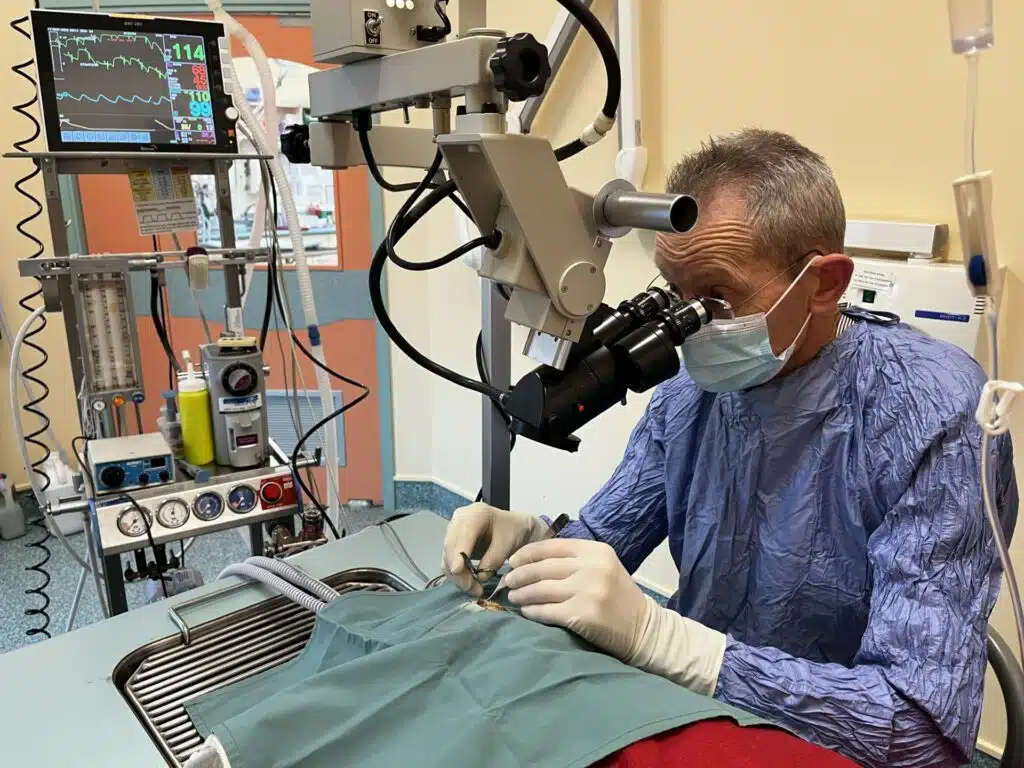 “There will never be an effective vaccine against feline herpesvirus (FHV) and feline calicivirus (FCV)” our virology lecturer asserted to my 4th year vet class. That was 1974. By 1976 as a fresh-faced new graduate in Waitara I was using the newly launched cat vaccine.
“There will never be an effective vaccine against feline herpesvirus (FHV) and feline calicivirus (FCV)” our virology lecturer asserted to my 4th year vet class. That was 1974. By 1976 as a fresh-faced new graduate in Waitara I was using the newly launched cat vaccine.
Snuffles is the common name for the disease caused by these two viruses. Snuffles sounds quite innocent but in those pre-vaccine days snuffles was often a severe disease. Kittens would present with their eyelids gummed together with the severe inflammation and pus. Sometimes the eyeball was ruptured. Some were unable to eat because their tongues were so ulcerated. Adult cats would be left sneezing green snot for months. A real problem when they sat on their owner’s shoulder and sneezed in their ear! Many of the problems were caused by the bacterial infections that followed the viral inflammation.
Vaccination steadily became more widespread over the next decade. However through the 1980’s it was still common for me to be operating to drain pus-filled sinuses in cats, or performing an operation to remove the rotten bones within the nasal cavity. These delicate scroll-like bones had become so infected with bacteria after severe viral damage that antibiotics could not get rid of the infection.
It is decades since I have had to perform these surgeries. Widespread vaccination of cats against these viruses has suppressed the worst aspects of the diseases. But significant problems persist. These are mainly associated with feline herpesvirus.
The herpes virus group is from an ancient family that coevolved with animals as they left the sea for dry land 400 million years ago. As their host species evolved herpesviruses evolved with them, becoming well adapted and rarely causing disease that is fatal to the hosts. So well adapted that once infected the host can’t get rid of the virus. These ‘latent’ infections only show up when the host is stressed or the immune system is compromised. There are 8 human herpes viruses and we are very familiar with cold sores (herpes simplex), chickenpox (herpes zoster), and its reactivated latent form shingles. Vaccination against chickenpox markedly reduces the incidence of the disease and the later occurrence of shingles.
The most common persistent problem from FHV infections in cats that we now see is recurrent conjunctivitis. This is commonly seen as mild increased tearing sometimes leaving a brown stain. Sometimes inflammation is more severe and yellow or green pus forms because of secondary bacterial infection. Respiratory signs like sneezing and nasal discharge may also recur.
If a kitten is severely affected sometimes the tear drainage ducts are sealed over and tears keep running down the face. Blocked tear ducts can usually be unlocked with a minor surgical procedure.

Corneal Sequestrum
A common but challenging problem of chronic FHV infection is corneal sequestrum. A reaction to herpesvirus in the cornea results in a dark brown or black hard scab-like lesion forming in the centre of the cornea. Initially it is painless but it often becomes painful and dangerous as it begins to split from the surrounding cornea. Dangerous because the split can extend through the cornea causing rupture of the eyeball. We often need to do corneal surgery to treat these lesions using an operating microscope.
Cats affected by feline calicivirus (FCV) often get oral ulcers but also conjunctivitis and snotty noses. Most recover fully and stop shedding virus after about 3 weeks but up to 40% can be long-term carriers. Some of these are the cats that develop a very troublesome and persistent gum inflammation called PLUGS – plasmacytic lymphocytic ulcerative gingivitis-stomatitis. It is as bad as it sounds! Some cats need all their teeth extracted because medical treatment fails.
FHV is a fragile virus and lasts outside the cat for only a day or so. Close contact is usually needed for infection. FCV on the other hand can last for 28 days outside the cat. This means it can spread on human skin or clothing to cats that are kept indoors. Owners of unvaccinated indoor living cats need to be aware of this if handling cats outside the home.
Vaccination recommendations
The FHV/FCV vaccine is typically combined with feline parvovirus vaccine (FPV) which causes a highly contagious and life-threatening disease. FPV vaccine produces very strong and long-lasting immunity so that we only rarely see this disease in Nelson.
All kittens should be vaccinated starting at 6 – 8 weeks and with booster doses every 3-4 weeks till at least 16 weeks of age. This is the most critical time to protect kittens from severe disease and minimise the risks of long-term carrier state problems. A booster vaccine is given 6 months later.
After that booster vaccinations are given according to lifestyle risk. Free-ranging cats, cats in multi-cat households and cats that will be going to boarding catteries should have annual revaccination. Solitary indoor-only cats have lower risk and may should have adequate protection from vaccination every 2-3 years.


Recent Comments